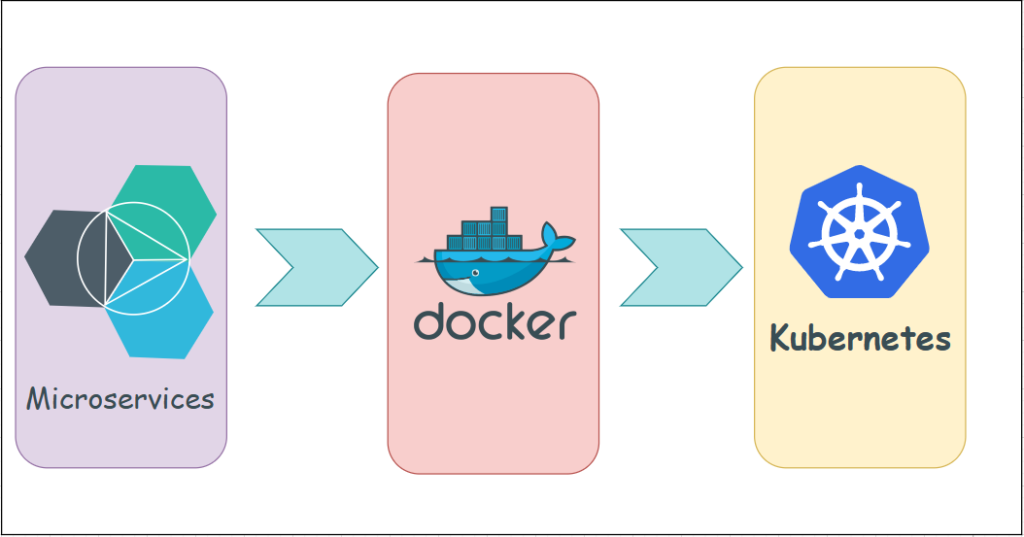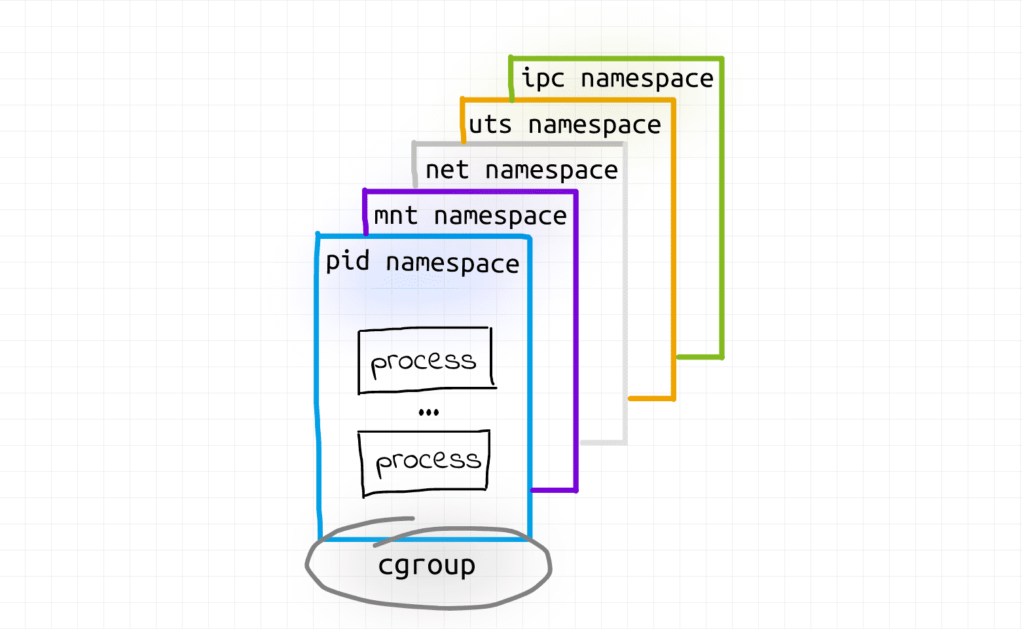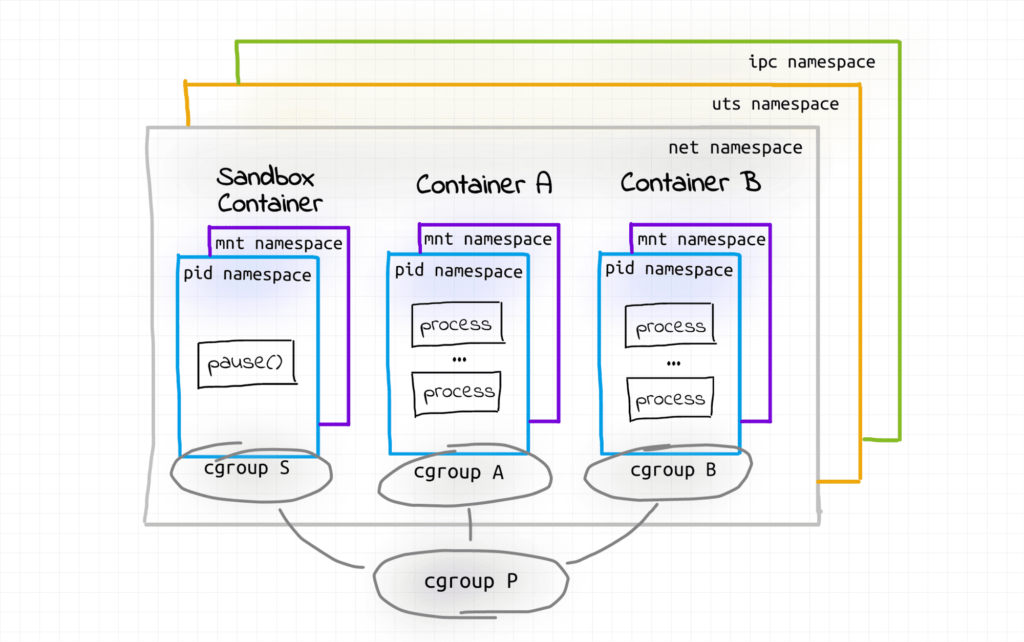In today’s fast-paced and ever-evolving software development landscape, three terms that are often heard are containers, pods and microservices. These are commonly used to build and deploy modern applications, but they are not the same thing. In this blog post, we will take a closer look at the key differences between containers, pods and microservices and how they can be used together to create powerful and scalable software systems.

Container
A container is a lightweight, stand-alone executable package that includes everything an application needs to run, including the code, runtime, system tools, libraries, and settings. Containers allow for consistent and isolated environments for applications to run in, regardless of the host operating system.
Containers are created from images, which are snapshots of the application and its dependencies at a specific point in time. These images can be stored in a registry, such as Docker Hub, and can be pulled down and run on any machine that has a container runtime, such as Docker. This allows for easy and consistent deployment of applications across different environments.
Containers use a technology called namespaces to provide isolation. Namespaces provide a way to partition kernel resources, such as network and process IDs, so that each container has its own isolated view of the operating system. This ensures that the resources used by one container are not visible or accessible to other containers, even if they are running on the same host.

Another important feature of containers is that they are lightweight and fast to start. Because they only include the necessary components to run the application, they are typically much smaller in size than a full virtual machine. This allows for faster deployment, scaling, and recovery of applications.
One of the most popular containerization technology is Docker, which provide a command line interface and APIs to interact with the container.
Pods
A pod in Kubernetes is a group of one or more containers that are deployed together on the same host. These containers share the same network namespace, and can communicate with each other using localhost. Pods provide a higher level of abstraction than containers and allow for easier management of multiple containers that are deployed together.
A pod can contain one or more containers, and all the containers in a pod share the same network namespace, meaning they can communicate with each other using localhost, and share the same storage resources. Also, all the containers inside a pod are scheduled on the same host, and share the same life-cycle.
Pods are used to deploy and manage containers in a Kubernetes cluster. They provide a way to group containers together and manage them as a single entity. Pods make it easier to scale, deploy, and manage containers, and they provide a higher level of abstraction than containers alone.
It’s important to note that a pod is not a container, a pod is a higher level of abstraction that contains one or more containers and provides additional functionality such as shared network namespace and storage resources.

Thus, Pods in Kubernetes are a higher level of abstraction than containers. They are a group of one or more containers that are deployed together on the same host and share the same network namespace and storage resources. Pods make it easier to scale, deploy, and manage containers, and they provide a higher level of abstraction than containers alone.
Microservices
Microservices is an architectural style that structures an application as a collection of small, independently deployable services. Each service runs in its own process and communicates with other services through well-defined APIs. This allows for a more flexible and scalable application design, as well as simpler testing and deployment.
In a microservices architecture, each service is responsible for a specific business capability and is built around a specific set of data. This allows for a high degree of autonomy and flexibility, as each service can be developed, deployed, and scaled independently of the others.
One of the key benefits of microservices is that they enable a more modular and incremental approach to software development. Instead of building a monolithic application, developers can work on small, focused services that can be easily tested, deployed, and maintained. This allows for faster development cycles, easier experimentation, and more effective collaboration between teams.
Another key benefit of microservices is that they enable easier scaling and deployment. Services can be scaled up or down independently of one another, as needed, and new services can be added or removed as the business requirements change. This allows for more efficient use of resources and a more responsive and adaptable system.

Microservices communication between each other is based on API calls, and the choice of communication protocol is up to the developer, common protocols are HTTP/REST, gRPC and message queue.
It’s important to note that the microservices architecture is not a silver bullet and not suitable for all type of systems, it’s suitable for complex and large systems that are expected to have high scalability and availability requirements and also for systems that are expected to evolve over time.
Conclusion
- Containers:
- A lightweight and stand-alone package that includes everything an application needs to run
- Allow for consistent and isolated environments for applications to run in, regardless of host operating system
- Created from images, which are snapshots of the application and its dependencies at a specific point in time
- Can be run on any machine that has a container runtime, such as Docker
- Provide isolation using namespaces
- Microservices:
- An architectural style that structures an application as a collection of small, independently deployable services
- Each service runs in its own process and communicates with other services through well-defined APIs
- Allows for a more flexible and scalable application design, as well as simpler testing and deployment
- Enables a more modular and incremental approach to software development
- Enables easier scaling and deployment
- Pods:
- A group of one or more containers that are deployed together on the same host
- Containers in a pod share the same network namespace, and can communicate with each other using localhost
- Provide a higher level of abstraction than containers alone
- Allow for easier management of multiple containers that are deployed together
- Used to deploy and manage containers in a Kubernetes cluster
- Provide shared network namespace and storage resources
In summary: Containers provide a way to package and deploy software in a consistent and isolated manner, Microservices provide a way to structure application in terms of small, independently deployable services. Pods provide a higher level of abstraction for deploying and managing multiple containers together, and it’s used in Kubernetes.
Reference
- Kubernetes
- Docker: Accelerated, Containerized Application Development
- Learn About the Microservices Architecture (oracle.com)
- Containers vs. Pods – Taking a Deeper Look (iximiuz.com)
